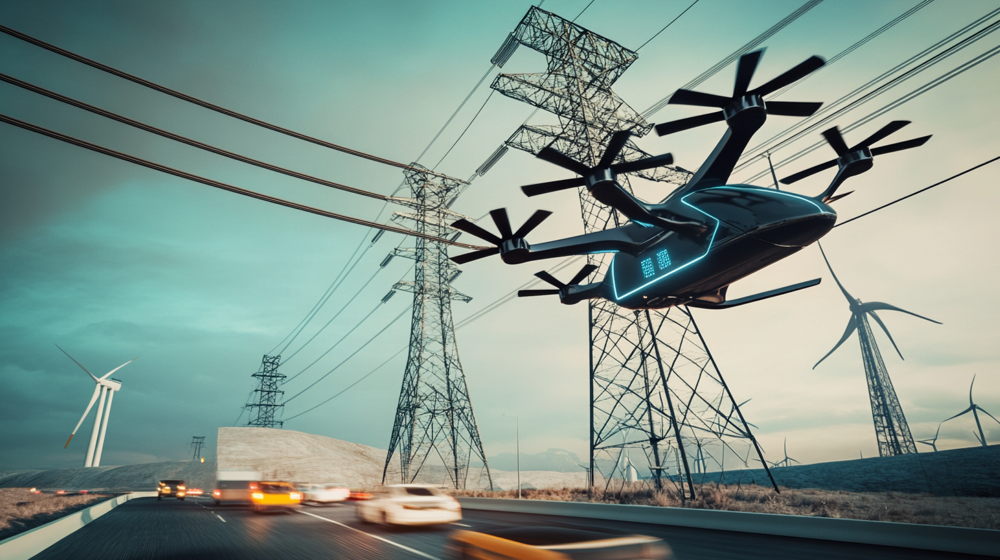The Pilatus PC-24 combines a turboprop’s versatility with a light jet’s performance. Dubbed the “Swiss Army Knife” of private jets, this remarkable aircraft has carved out a unique niche in the aviation market since its introduction.
eVTOL News | Electric Aircraft News | Advanced Air Mobility News
News
The aviation industry is rapidly evolving beyond traditional transportation paradigms, with multi-modal integration emerging as a key strategy for enhancing efficiency, accessibility, and sustainability. This shift presents challenges and opportunities for business aviation professionals to reimagine how private air travel fits into the broader transportation ecosystem. The partnership between Delta Air Lines and Joby Aviation offers valuable insights for business aviation operators seeking to position themselves advantageously in this changing landscape.
In a landmark European urban air mobility achievement, EHang successfully conducted the first unmanned eVTOL flight in an urban environment. The Chinese company's EH216-S aircraft completed this groundbreaking demonstration in Benidorm, Spain, on February 28, 2025, marking a pivotal moment in the evolution of advanced air mobility across the continent.
In a major achievement for the Japanese electric vertical take-off and landing (eVTOL) industry, Japan-based SkyDrive Inc. announced on February 10, 2025, that the Japan Civil Aviation Bureau (JCAB) had issued a G-1 certification basis for its flagship eVTOL aircraft. This pivotal achievement represents a crucial step in SkyDrive's journey toward full aircraft certification and commercial operations, positioning the company at the forefront of Japan's emerging urban air mobility sector.
Advanced Air Mobility and Electric Vertical Takeoff and Landing (eVTOL) aircraft will redefine urban mobility by offering point-to-point aerial transportation. However, their integration into densely populated areas will demand careful planning across three related disciplines: flight corridor design, acoustic impact mitigation, and community acceptance.
- This Article has been UpDated:
 The Global Low-Altitude Economy, Q2 2025: Strategic Advances and Market AccelerationThe low-altitude economy, encompassing economic activities within airspace below 1,000 meters and extending to 3,000 meters when operationally necessary, achieved significant milestones during Q2 2025...
The Global Low-Altitude Economy, Q2 2025: Strategic Advances and Market AccelerationThe low-altitude economy, encompassing economic activities within airspace below 1,000 meters and extending to 3,000 meters when operationally necessary, achieved significant milestones during Q2 2025...
The low-altitude economy, encompassing economic activities within airspace below 1,000 meters, experienced remarkable growth in Q1 2025. This rapidly evolving sector, driven by advancements in cargo delivery, urban air taxi services, and medical transport, has gained momentum in China, where it is considered a strategic emerging industry with significant national investment. Over the past 45 days, China’s institutional reforms solidified its leadership position, Europe accelerated regulatory harmonization, and North America advanced urban air mobility integration. Concurrently, technological breakthroughs in battery technology and vertiport infrastructure have reached critical maturation points, enabling operational scalability across global markets. This report analyzes these key developments and their implications for the future of aerial mobility.
ZeroAvia’s innovative 600 kW electric propulsion system (EPS) has found its first customer in Jetcruzer International, marking a significant step in commercializing hydrogen-electric aviation. This partnership aims to integrate ZeroAvia’s technology into the Jetcruzer 500E, a six-seat hydrogen-electric aircraft targeting entry into service by 2028.
Chartering a private jet represents a significant financial investment, but its value proposition extends far beyond luxury. Private aviation offers unparalleled flexibility, productivity, and operational convenience for businesses, high-net-worth individuals, and those prioritizing time efficiency. This report will evaluate when private jet chartering becomes a strategically justified choice. Key findings include hourly charter rates ranging from $1,800 to $14,000, time savings of 6–10 hours per trip compared to commercial flights, and enhanced accessibility to over 5,000 airports globally. The decision to charter vs flying commercial hinges on factors such as group size, travel frequency, itinerary complexity, and the economic value of time saved.
The future of advanced air mobility (AAM) relies on groundbreaking eVTOL aircraft and robust and innovative power infrastructure. Vertiports, the hubs for these electric aircraft, face significant energy challenges as they transition from concept to commercial operation.
- NASA’s Sulfur Selenium solid-state battery Technology Impact on eVTOL Aircraft Development
- Beyond Aero's BYA-1: The Future of Zero-Emission Business Aviation
- How AI and blockchain technology are driving the Evolution of FBO Operations in 2025
- AutoFlight Aviation's V2000CG eVTOL: A New Heavy-Lift Cargo Drones
- EHang Opens Automated Takeoff-Landing Facility for eVTOL Vehicles
- Honeywell Anthem Gets Boost from NXP Partnership for Advanced Air Mobility
- Shanghai's Action Plan for the Low-Altitude Economy Industry 2024–2027
- Impact of eVTOL Aircraft Outwash on Vertiport Design
- Skyscraper Vertiports: Converting Highrise Buildings and Parking Structures for Vertiport Operations
- 2025 outlook for vertiport and advanced air mobility industry








